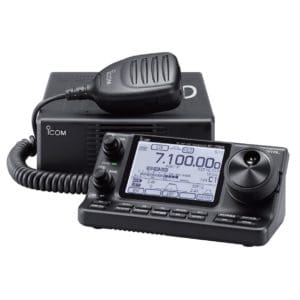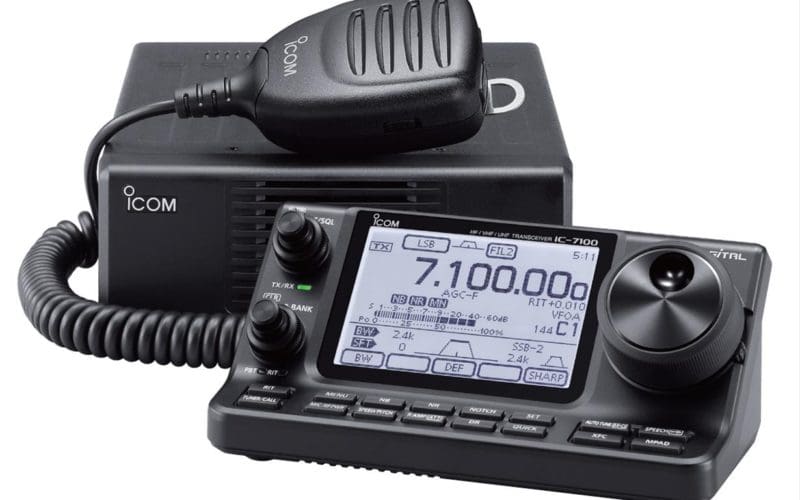by Bill Morris
 With the growing array of communication options for offshore sailors, it is easy to be dazzled by the growing availability of satellite phones and even digital television.
With the growing array of communication options for offshore sailors, it is easy to be dazzled by the growing availability of satellite phones and even digital television.
In reality, though, hardcore voyaging sailors by and large depend on the flexibility and independence afforded by amateur, or “ham,” radio, which allows you to speak with other radio operators on both land and sea anywhere in the world with no monthly or per-minute charge to worry about.
As long as you have the requisite FCC license, at least General Class, you can rag-chew to your heart’s content from any point on the globe. With a high-quality, properly installed ham radio and antenna system, your radio station will be your link to fellow cruisers who can inform you of port clearance procedures, weather conditions and other information essential to a safe, enjoyable cruise.
While land lubbers can still choose from a wide selection of large, desktop SSB/AM/FM/CW transceivers, the pickings have gotten slim for offshore cruisers, leaving us only two manufacturers willing to continue serving this market: ICOM and Yaesu.
The ICOM IC-7100, a great choice for a small nav station in an offshore cruising boat, offers up to 100W of transmit power on USB, LSB, CW, RTTY, AM and FM.
The radio head features a large touch screen and a separate control module with a cable allowing you more flexibility in arranging your nav station to accommodate the unit. The radio also offers a sloped screen and jacks for a headphone or speaker, microphone, control cable connection and a CW key — that’s right, some skippers still use Morse code!
A built-in SWR graphic meter display provides an ongoing visual of reflected radio transmissions, which can harm any radio if the antenna tuner is not properly adjusted for a given frequency band. Not having to install a separate SWR meter saves just that much more space — and hassle — in the limited confines of your nav station. Priced at roughly $1,000, the ICOM IC-7100 offers loads of communication capability for a very modest outlay from the cruising kitty.
The Yaesu FT-891 All Mode Mobile Transceiver is the only other small-profile ham transceiver currently being manufactured for mobile use. Features include a large-diameter (1.6”) main tuning dial, pop-up menu, multifunction knob, a large transmit/receive indicator and three programmable front panel function keys.
The FT-8910 transmits at a maximum of 100W (25W AM) and keeps itself cool with dual thermostatically-controlled internal fans. The radio’s 32-bit, high-speed Point DSP attenuates much of the random noise that we often hear on the HF bands.
Yaesu, which goes under the name Standard Horizon in the U.S., has a long, proud history of providing high-quality commercial and recreational radios at competitive prices. At around 700 bucks, it’s hard to imagine a better value for the price.
Both the ICOM IC-7100 and Yaesu FT-891 require an antenna tuner, which is a compact box full of coils of wire adjusted by a microprocessor to match the transmit frequency selected by the operator.
Yaesu manufactures its own antenna tuner, the optional FC-50, to support the FT-891, and ICOM offers the AH-730 tuner, which tunes from 1.8 to 50 MHz. Both tuners require a long length of antenna wire, which is usually the backstay when installed on a sailing vessel. This installation will require backstay insulators and a length of wire from the tuner to the backstay antenna.
If you want to stay in touch with fellow cruisers in your corner of the ocean, study for your FCC Amateur Radio license, install the transceiver and antenna system of your choice and enjoy the freedom that comes with marine mobile ham radio.
Circumnavigator-author Bill Morris believes the best strategy for succeeding as an offshore voyager is to keep systems simple and, if possible, manual. Bill is an Ocean Navigator contributing editor and the author of The Windvane Self-Steering Handbook (International Marine, 2004) and The Captain’s Guide to Alternative Energy Afloat(Seaworthy Publications, 2019).

